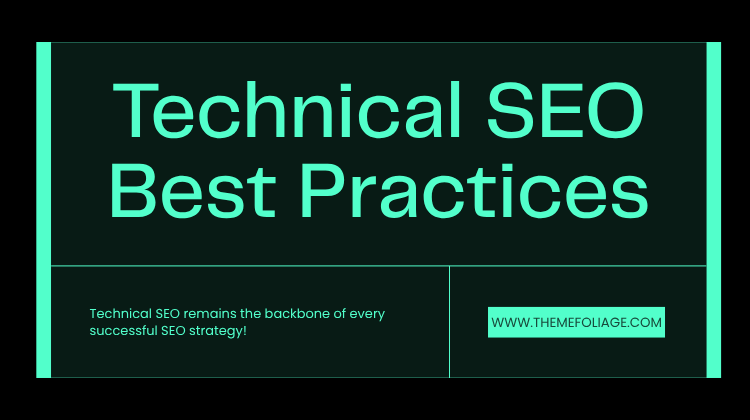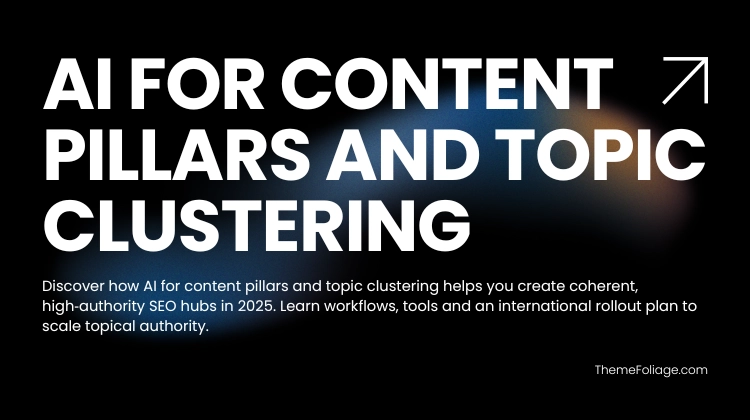Technical SEO remains the backbone of every successful SEO strategy. As Google’s algorithms grow more advanced, websites must focus on speed, accessibility, and machine-readable structures.
In 2025, user experience, crawl efficiency, and structured data define search visibility. This guide covers all essential technical SEO best practices to future-proof your site.
1. Prioritise site speed and performance
Speed directly impacts both rankings and user satisfaction. Google’s Core Web Vitals continue to be a ranking factor in 2025, so your site must load quickly across all devices.
- Optimise images with modern formats like WebP or AVIF.
- Use lazy loading for below-the-fold content.
- Minify CSS, JavaScript, and HTML files.
- Implement a Content Delivery Network (CDN) for global performance.
- Regularly test using Google PageSpeed Insights or Lighthouse.
2. Mobile-first indexing is non-negotiable
Google now indexes primarily from the mobile version of your website. Ensure your site is fully responsive and optimised for smaller screens. Focus on Mobile-first SEO optimisation.
- Use a mobile-friendly design with fluid layouts.
- Ensure identical content between mobile and desktop versions.
- Test responsiveness using Google’s Mobile-Friendly Test.
3. Strengthen website security (HTTPS)
Security remains a ranking signal and user trust factor. All websites must use HTTPS in 2025 — HTTP is now considered outdated and unsafe.
- Install an SSL certificate across all domains and subdomains.
- Redirect all HTTP traffic to HTTPS.
- Check for mixed content issues that break SSL validation.
4. Improve crawlability and indexation
Search engines can’t rank what they can’t crawl. Make your website easy for Googlebot to navigate.
- Keep a clean robots.txt file and ensure critical pages aren’t blocked.
- Submit a structured XML sitemap to Google Search Console.
- Use internal linking to help crawlers discover important pages.
- Avoid infinite scroll or complex JavaScript that hides content.
5. Maintain clean and canonical URLs
Duplicate content and inconsistent URL structures can dilute ranking signals. Canonicalisation helps Google understand which version to index.
- Implement canonical tags on all pages.
- Use SEO-friendly URLs, short, descriptive, and hyphenated.
- Avoid session IDs or tracking parameters in URLs.
6. Structured data for richer search results
Schema markup helps search engines understand your content better. In 2025, it’s crucial for eligibility in rich results and AI-driven search features.
- Use JSON-LD structured data format.
- Add relevant schema types: Article, FAQ, Product, Organisation, and Review.
- Validate your markup using Google’s Rich Results Test.
- Monitor coverage in Google Search Console’s Enhancements section.
7. Manage crawl budget efficiently
For large websites, managing Google’s crawl budget ensures critical pages are indexed frequently.
- Fix broken links and eliminate redirect chains.
- Block low-value pages like filters or tag archives in robots.txt.
- Consolidate duplicate or thin content.
8. Optimise for Core Web Vitals (2025 benchmarks)
Core Web Vitals measure real-world user experience. In 2025, new metrics like Interaction to Next Paint (INP) replace older measures such as FID (First Input Delay).
- LCP (Largest Contentful Paint): Aim for ≤ 2.5 seconds.
- INP (Interaction to Next Paint): Target ≤ 200 milliseconds.
- CLS (Cumulative Layout Shift): Keep below 0.1.
9. Handle redirects correctly
Redirects maintain SEO value when done properly. Avoid redirect loops and unnecessary chains.
- Use 301 redirects for permanent URL changes.
- Update internal links to point directly to the new URL.
- Monitor with crawling tools like Screaming Frog.
10. Fix crawl errors and 404s
404 errors waste crawl budget and harm user experience. Regularly audit your site for broken links.
- Set up custom 404 pages that guide users back to key content.
- Use Google Search Console to identify and fix errors promptly.
11. Optimise images and media
Visual content should enhance SEO, not hinder it. Compress and describe all images correctly.
- Use descriptive alt text for accessibility and keyword relevance.
- Adopt next-gen image formats for faster loading.
- Implement responsive images (
srcsetattributes).
12. Review server performance and uptime
Your hosting infrastructure directly impacts SEO. Downtime and server errors reduce crawler trust.
- Use reliable hosting with 99.9% uptime.
- Monitor server response codes (200, 301, 404, 500).
- Check crawl stats in Search Console for anomalies.
13. International SEO and hreflang tags
If your website serves multiple regions or languages, implement hreflang tags correctly to avoid duplication issues.
- Use
hreflangannotations for each language-country combination. - Ensure bidirectional linking between versions.
- Submit international sitemaps to Google.
14. Audit your site regularly
Technical SEO is never a one-time fix. Continuous auditing ensures your website remains compliant with Google’s latest standards.
- Perform monthly or quarterly technical audits.
- Use tools like Screaming Frog, Sitebulb, and Ahrefs Site Audit.
- Document fixes and improvements over time.
Conclusion
Technical SEO in 2025 is all about precision, performance, and adaptability. By maintaining a fast, secure, and crawlable website, you create the foundation for long-term search visibility.
Stay ahead by auditing your site regularly, adopting emerging standards, and keeping both users and search engines happy. You should also check out – Link Building strategies for your website.



